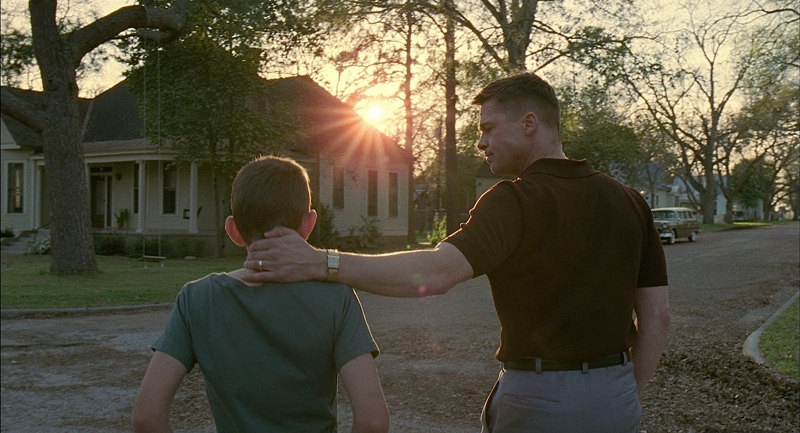In spite of its origin, “The Secret” manages to craft a compelling, thought-provoking and heart breaking narrative of love and loss thanks to an outstanding performance from Olivia Thirlby and solid turns from both David Duchovny and Lili Taylor. (“The Secret” is a remake of a 1999 Japanese film. That film, in turn, is an adaptation of a Japanese novel.)
When Hannah Marris and her daughter Sam (Taylor, Thirlby) are in a car accident, Hannah’s spirit is transferred into the younger body in a moment of paranormal transference. It is then up to the combined Hannah/Sam and Ben to navigate this new relationship, including marital sex and Sam’s teenager life, while maintaining the illusion of a mourning-though functional-family.
There is a situation we fully expect to see in the movie, based on the actions and diagloue present in “The Secret.” It’s not a scene we especially want to see; this one seems inevitable, almost like the predetermined confrontation between good and evil in every fantasy film ever made. To its great credit, though, despite teasing a romantic coupling between a father and his daughter’s body, it never does. As an audience, we’re let off the hook of having to endure an awkward sex scene when wiser heads should have prevailed.
Much of this 2007 production works in the same manner. Difficult topics are brought up and the characters find their way through them in tasteful, if not always loving, ways. There is no blueprint for Ben, Sam and Hannah to adhere to. Spirit transference doesn’t happen-we assume-on a regular basis. And if it does, people don’t talk about it. How are you supposed to react to suddenly being someone you don’t understand? What types of potentially hurtful secrets do you find out about them? How does the relationship dynamic change?
“The Secret” slowly introduces the three main characters, taking its time to show the depth of love Ben and Hannah share. Scenes such as their night alone allows the drama to come to hold an emotional resonance with the audience, as opposed to being another weird event happening to normal people. It’s no small feat, then, to integrate Sam into the picture, complete with her rebellious streak and disdain for Hannah. Most of the first half hour is devoted to setting up the relationships, gently prodding them along without repeating the same scene over and over. Director Vincent Perez and screenwriter Ann Cherkis understand the difference between reinforcing an idea and needlessly bashing the audience over the head with it.
We are shown Sam’s first day at school with the requisite situations she’d find herself in: forgetting a locker combination, being overwhelmed in honors classes, finding school has changed over the years, and so on. These are all necessary events to play out for the audience to further create a real world. As with the relationship building before it, there are not endless scenes of the “fish out of water.” Just enough to give us a taste before moving on. Whether by design or out of necessity, it’s a strategy which works as well as it possibly could have.
Thirlby, best known for “Juno,” is third billed on the DVD and is the least known of the three leads, yet the power of “The Secret” rests on her ability to play both a teenager and forty-something mother. With a grace, determination and confidence to challenge Duchnovny, Thirlby exudes Taylor from her pores. She doesn’t overthink the part, opting to understand each emotion and situation from both perspectives, as evidenced by her multi-layered performance. This film is a calling card for the young actress, a highlight reel if you will and one of the gripping female performances from last year.
Plotlines screaming either “boring” or “unnecessary” find themselves quickly moved to the sidelines. Following the transference, there’s never one magical moment in which Ben finally believes Hannah. Instead, we see a montage of reading in the library, followed with his verbal acceptance of the situation. And then a minor subplot with a potential love interest goes as far as it needs to in order to assist with the main story. That’s the way “The Secret” works: economical, forthright and fearless.
VIDEO:
Despite a dark, intentionally washed out look to the film, “The Secret” sports a remarkable 2.35:1 anamorphic widescreen transfer. I didn’t notice a single problem in the presentation; not a spot of grain, artifacting, ripples or distortion. Blacks are deep throughout the picture while both indoor and outdoor scenes are perfectly rendered. Even one potentially problematic sequence late in the film-a redish glow-doesn’t smear or cause a problem. This is a beautiful presentation.
AUDIO:
I’m not quite as happy with the audio options (English 5.1 and 2.0) only because the score and soundtrack on both versions tends to overpower some of the quieter, dialogue driven moments in the film. “The Secret” relies on its words to generate an impact; when pieces of conversations are lost for no good reason, something is wrong in the mixing booth. However, as with the video, there aren’t any other problematic aspects to either mix. Both versions appear nearly identical, with the 2.0 more forceful through the front speakers. Aside from a couple sequences, there really isn’t a need for the enhanced track. English and Spanish subtitles are included.
EXTRAS:
I won’t lie: I hoped for more special features than what is included. First up is roughly eight minutes of behind the scenes footage. It largely consists of director Perez shooting scenes and interacting with the cast. Shot in fullscreen, I can’t help but label it as suplurflous fluff. Slightly better are a series of interviews with the leads (Duchony, Taylor and Thirlby) discussing the film and their roles. Again, it’s nothing groundbreaking and Taylor seems ill at ease early in her section. They’re nice, though only Taylor’s delves into the meat of the story, so to speak.
A couple trailers start the film: “My Brother is an Only Child,” “The Riddle” and “Walker Payne” while this film’s red band (R-rated) trailer is also included.
PARTING THOUGHTS:
“The Secret” wisely avoids falling into “icky” territory by addressing the sexual component of the situation without resorting to lowest common denominator titillation. By following a singular through line, the story is able to hit the moments it needs to in the journey of the Marris family. There is just enough on screen to show character and plot development, yet not so much scenes feel familiar.


